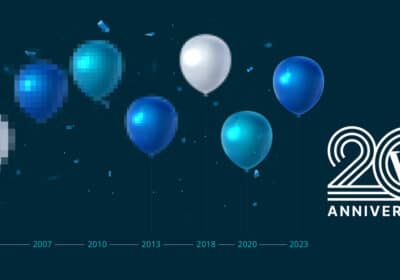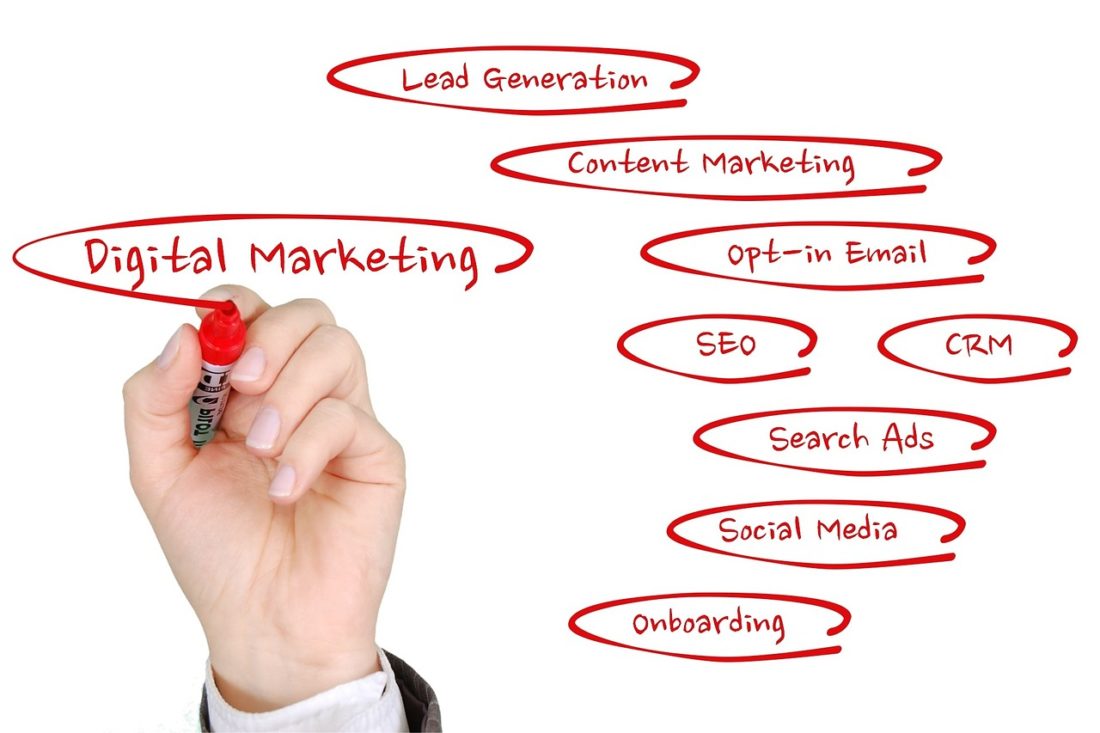Digital marketing, like every other industry, continues to evolve with the invention of new technologies. It’s necessary to keep up with developments to stay in touch with your audience, but also to understand the history of the field to fully appreciate modern-day techniques and strategies.
Here we’ll discuss the evolution of digital marketing, predictions for its future, and lessons to keep in mind going forward. Let’s dive in!
The Current State of Digital Marketing
Digital marketing simply refers to the practice of promoting products and services via the internet. Just as with traditional marketing, the goal is to create awareness of your brand and products among the general public.
Before the advent of digital marketing practices, businesses relied solely on offline strategies. These included avenues such as billboards, TV and radio ads, newspapers, direct mail, phone calls, postcards, catalogs, brochures or other print materials, and so on.
Even today, with so many companies scrambling to reach as many customers as possible, some of these traditional marketing tools are still effective. Older segments of a brand’s audience, for example, might feel more comfortable reading physical copies of newspapers than their soft-copy equivalent. Radio marketing isn’t dead either.
However, one of the main differences between both forms is the amount of reach they offer. Radio or newspaper ads might be effective for targeting local consumers. However, if you’re looking to market globally, digital methods are your best bet. They can also be more cost-effective than their traditional counterparts.
Digital marketing can be achieved through tweets, videos, podcasts, email, blog content, Pay-Per-Click (PPC) advertising, and more. To illustrate the reach of digital marketing, there are about 3.5 billion social media users; nearly 45% of the global population!
Additionally, it’s increasingly difficult to market to younger generations. It can take a lot of convincing to get them to commit and buy. Your digital marketing campaigns can help you reach and sell to them over the long-term. Overall, digital mediums provide much better ways to stay in touch with your audience and build connections with them.
The Evolution of Digital Marketing (5 Key Turning Points)
Having discussed the current state of digital marketing, let’s now take a look at how it has evolved over the years using examples of some major milestones in its history.
1. Search Engines Come Into Play
The World Wide Web was launched in 1991, but it didn’t make much of an impact until the first really popular browser, Netscape, made its way into the market in 1994. More people began to use the web, and as this happened, search engines such as Google also made appearances between the 1990s and early 2000s.
Search engines work by crawling web pages and storing them for later retrieval based on keywords used in search terms. This has brought rise to what is known as Search Engine Marketing (SEM), the practice of promoting websites and blogs by increasing their visibility through strategies such as Search Engine Optimization (SEO) and paid advertising.
2. The Social Media Revolution
The World Wide Web was initially meant to be a collaborative space for sharing information. You can probably agree that it has become much more than that. Social media platforms such as Facebook, Twitter and many more have made it possible not just to exchange information, but also to connect with other people.
This also enables businesses to reach global audiences. To do this, brands can utilize paid ads targeted towards general or specific audiences, work with influencers who market products to followers, and more.
Facebook, for example, was launched in 2004 and attained a user base of one million by the end of that year. In 2007, it launched its first self-service advertising platform as well as business pages, further increasing overall ad revenue to $700 million. More platforms have followed suit, providing a base for brands to reach their audiences.
3. Mobile-First Marketing
Google’s Accelerated Mobile Pages (AMP) project has made it necessary to ensure SEO-optimization for mobile sites. This initiative is aimed towards improving loading times of pages on devices such as smartphone and tablets. It also focuses on other factors such as User Experience (UX).
This is particularly significant due to recent stats regarding mobile usage. In 2019, 52.2 percent of all web traffic came from mobile phones, compared to 16.2 percent in 2013. However, it’s worth noting that this only includes data for mobile phones, and not tablets.
Increasing mobile usage, as well as the AMP initiative, has made it essential to ensure that marketing campaigns are not only accessible on larger devices, but can be viewed without noticeable visual or performance differences on smaller screens, too.
4. Consumer Data and Targeted Campaigns
Another major milestone in the history of digital marketing is the reliance on data for creating targeted marketing campaigns. Customer Relationship Management (CRM), for example, is a business process that enables brands to develop long-term relationships with their customers through data-driven marketing activities.
CRM tools let you work iteratively based on data from performance analytics. This can make it easier to predict customers’ purchasing habits, further define target audiences, and increase overall customer satisfaction.
The ability to make predictions about customer behavior is particularly significant because marketing strategies keep evolving as a result of technology and other factors. Using CRM techniques such as regression and statistical analysis can make it possible to identify any changes in consumer habits.
This also makes it possible to create better business impact models for accurately measuring marketing performance.
5. Voice Search and Interactive Content
One important goal for brands is increasing engagement with customers and fostering a sense of community and loyalty. This has given rise to high-quality and interactive content such as games, fun social media contests, immersive app experiences, and more. These not only attract audiences but provide a way to sustain their attention over the long-term.
On the other hand, voice search is now one of the most important marketing trends, providing a new way to conduct searches as well as promote businesses. It can also attract more traffic as its results generally have a high chance of being extremely relevant at first attempt.
What The Future Holds for Digital Marketing (and Lessons to Take Forward)
Based on current trends, we can make certain forecasts on what the future of digital marketing will look like. For example, the use of Artificial Intelligence (AI) technologies will likely be more pervasive. We currently see it being implemented in content creation, product recommendations, ecommerce transactions, and more.
We also expect increased usage of chatbots for customer engagement. Already, Mastercard uses a Facebook messenger bot with natural language processing capabilities to decipher customer needs and respond to queries like a human.
Finally, we’ve already discussed how voice search has soared in popularity, and we expect it to continue to do so. These trends should ideally inform all aspects of your marketing strategies to enable you to keep up with your audience’s inevitable adoption of current or emerging technologies and practices.
Conclusion
Knowing where you’ve been is important to finding your way forward. This is no different in marketing. Understanding the history of digital marketing is necessary to figure out how to best leverage current technologies and practices.
Has learning about the history and evolution of digital marketing improved your understanding of current practices? Let us know in the comments section below!
Image by Wynn Pointaux from Pixabay





Ndaba William Dlamini on
Digital marketing is growing. As it grows does it have problems or not? In other words: What are the problems of digital marketing compared to the old marketing strategy?
Rashi on
I really found it useful !